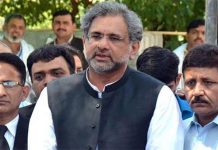Karachi: The majority of child abuse cases in Pakistan go unreported, according to child protection experts speaking at a seminar titled ‘Safeguarding Children: Communities, Schools and Online,’ organised by Aga Khan University’s Institute for Educational Development (IED).
Even though Pakistan has a range of laws to protect children, poor implementation of regulations alongside a low conviction rate means that child abuse continues to be a persistent problem in society. Highlighting the ways to report child abuse, experts noted the actions parents can take to protect a child. For example, if abuse has occurred and medical help is needed, parents can go to a hospital. They may also inform the police by dialling 15 or call the child protection authority on 1121.
Dr Kishwar Enam, a lecturer at the department of paediatrics at AKU’s Medical College and president, Child Protection Services, Aga Khan University Hospital, said that around the world, seven out of ten cases of child abuse take place at homes (such as the residence of victims or offenders). Dr Enam noted that this figure is likely to be similar in Pakistan, but cautioned that underreporting of crimes means that statistics from NGOs and the Sindh government are likely to underestimate the scale of the problem.
“There are many reasons why cases go unreported,” said Dr Enam. “These include fear of the perpetrator, concerns about being stigmatised by society, economic dependence, inability to recognise child abuse as being improper, poor awareness of ways to complain, and a lack of trust in the system.”
Speakers at the event expressed concern about the growing number of child abuse cases in Pakistan and discussed how neighbourhoods, schools, and parents can take steps to reduce the risk of abuse, which can happen to children of any race, socioeconomic group, religion, or culture.
Commenting on the ways to protect children, Mrs Lubna Khan, head teacher at Berrymede Junior High School in the United Kingdom (UK), spoke of the importance of having a coordinated, multi-agency model that prioritises a child’s wellbeing. She noted that each school in the UK has designated child protection officers and that all teachers are cleared through the government’s Disclosure and Barring Service, which screens employees for criminal conduct. Teachers are regularly trained and the education sector regulator, Ofsted, also assesses a school’s ability to keep children safe.
On the topic of online safety, speakers drew attention to the three Cs of risk: content, contact and conduct. Azra Naseem, director of AKU’s Blended and Digital Learning Network and a senior instructor at IED, described how a child could be exposed to disturbing content online, be contacted by a stranger on gaming or social network sites, or be a perpetrator themselves if they share problematic images or content.
Ms Naseem noted that parents, teachers, and other stakeholders should be knowledgeable about the risks posed by their children accessing the internet, and should discuss these points with their kids. She also highlighted the importance of dialogue and digital literacy initiatives in protecting children online.
During the question-and-answer session, moderated by IED Dean Professor Farid Panjwani, participants discussed the long-term impact of child abuse on society, and how to improve Pakistan’s response to the challenge.
Dr Enam noted the importance of acknowledging the feelings of a victim of abuse and of providing them with support. “Make sure to listen and support your children. Tell them that they did the right thing by telling you and never silence them or tell them to ignore or forget about the problem. With proper support and timely care, good outcomes are possible for helping child and adolescent survivors recover,” she said.
Speakers noted that in the long term, Pakistan needs to invest in awareness programmes to change social norms that perpetuate a culture of silence. The focus should be on supporting children and parents; working directly with children to build their knowledge on how and where to seek help and protection; and on educating parents, teachers, and adults to identify signs of abuse and make sure children receive care and protection.









